News 11/11/15
Top News
Walgreens expands its $49 MDLive-powered telemedicine services to 25 states, integrating it into the Walgreens mobile app rather than requiring users to install and run MDLive’s own app. The company also launches the ability for Walgreens Balance Reward members to connect to Walgreens-brand glucometers and blood pressure machines and will pay members for recording their measurements regularly. The company says 500,000 active devices are already connected. It’s amazing what can be accomplished with healthcare technology when incentives are aligned.
I have zero doubt: Walgreens is the most technologically advanced and most consumer empowering company in healthcare. They’ve driven more innovation into the health experience than anyone.
Reader Comments

From Solid-State Component: “Re: mHealth Summit. Is it just me or is the conference the same recycled buzz year after year? Everybody is always talking about what they’re going to do or how wonderful mHealth and wearables will eventually be, but I don’t see a lot of real-life action or results.” The conference’s premise has moved from shaky to absurd as the expiration date has been reached on the idea that mobile health is an edgy concept that stands separate from any other kind of health or healthcare. Everything is mobile by definition – when did you last hear the phrase “mobile banking” or “mobile music?” Wearables have run their course (no pun intended) without accomplishing anything other than to allow healthy people to stroke their egos. I’ve heard of nearly none of the companies or presenters at this week’s conference, which seems unchanged from the two I’ve attended previously that were painfully unfocused and uninformative, a weird conglomeration of mobile messaging projects in Africa, mostly bored venture capitalists, pedantic academics, and clearly doomed startups with laughably minimal healthcare experience. It has become the industry’s Single A farm team, where most of the players will deservedly never see an inning in The Show but keep plugging away hoping to attract a paying customer or paying acquirer, huddling together for validation in National Harbor, MD and pretending they wouldn’t really rather be at the HIMSS conference with the big boys. I ran across a few interesting people and companies when I attended previously, but mostly I was kind of embarrassed to be part of it, rather like the one and only time I attended the TEPR conference as it was wheezing its last breaths.
From Nom de Nonsense: “Re: pointless company rebranding and strange names. I thought you would enjoy this Economist editorial.” I did indeed, as the author calls out the “ever-sillier ways” in which companies are identifying themselves. Examples: AbInBev/SABMiller (the multi-merged global beer conglomerate) and Diageo (another alcoholic beverage conglomerate that hides cool names like Guinness under its bland skirt). It calls Yahoo “tediously wacky,” dislikes made-up conjoined names (PingStamp), and loathes misspellings (Kabbage). It calls out PricewaterhouseCoopers (one of those infuriating “we can’t decide which name is most important after we’ve merged” company names, later rebranded to PwC) for being convinced by a branding agency to call its spinoff consulting business Monday, although it sold the business to IBM before the change. The article concludes that plenty of good names remain (Alphabet was good enough for Google) to obviate the need for “Scrabble spillage,” assuring that great companies will do just fine with boring names but clever names won’t save struggling ones. The article’s only omission is not mentioning companies that pointlessly capitalize their entire name, the marketing equivalent of shrieking and stomping childishly to be heard over the competitive din. Here’s my challenge to you: what are the most-contrived, least-informative, or most-annoying company names in healthcare IT? Let me know and I’ll run a list of what I’m sent.

From What’s the Vector Victor: “Re: SNOMED. Has terms for the number of prior abortions. Our vendor, Practice Fusion, displays quantities of 1, 6, and 8 under the search. Does this happen in other SNOMED crosswalks?”
From Truven Watcher: “Re: Truven Health. Continued dismal operational performance.” The latest 10-Q shows that the company lost $15 million in the quarter and $66 million in the first nine months of the fiscal year. It contains a lot more financial detail than my attention span can manage.
HIStalk Announcements and Requests
Welcome to new HIStalk Gold Sponsor TierPoint. The St. Louis-based IT and data center services provider offers flexible, scalable, and secure solutions: production and disaster recovery clouds, co-location, and managed services (managed backup and business continuity, managed security, managed networks, DDoS protection, and enterprise hosting). A case study from services provider Clario Medical describes its migration from TierPoint-hosted servers to a private cloud infrastructure (load-balanced servers and SSD drives running VMware’s VSAN) with managed security services and HIPAA compliance. Some of the company’s 3,000 customers include Kootenai Health, WellDoc, and the Bill & Melinda Gates Foundation. Thanks to TierPoint for supporting HIStalk.
I found a TierPoint video titled “Tips for a Successful Cloud Migration.”

My inexpensive but capable Asus tablet developed a charging problem after a couple of years of reliable use, which gave me the excuse I needed to skip a repair and instead get something zippier and slicker (although it turned out to have been a curling iron-scorched power cord that I’ve replaced and it’s working fine again). A bit of research turned up my deal: Walmart has the iPad Mini 2 16GB for $199 with free shipping or in-store pickup. I had it running almost instantly after I picked it up yesterday at the store — it automatically brought over most information from my iPhone, even (shockingly) my recent browser searches and auto-completes. Screen resolution on the Retina display, Netflix streaming, and speed are great and the battery life seems excellent. I had considered a direct-from-China off-brand that has good reviews for $60, but I think it’s probably worth the difference to get Apple, plus the eight-inch screen is much better for reading or streaming than the seven-inch standard while not being as bulky as the 10-inch iPad. It would make a great Christmas gift for almost anyone since it’s really easy to set up and use. I’m far from being an Apple fanboy, but this is a great deal, especially since Apple sells the same model for $269.

Ms. W sent photos of her Washington fourth graders using the headphones and flash drives we provided via DonorsChoose. She says struggling readers are getting more engaged by using the audio versions of some textbooks and are using the flash drives to take their writing assignments home or to the public library.
I’m annoyed at banks and other companies whose recorded greeting asks me to say or enter my account number, reads it back painfully slowly from the computer for my confirmation, but when I finally get a human on the phone, they have no idea who I am or why I’m calling.
I’m also annoyed at doctors and others who smugly observe (with no originality whatsoever) that EHRs were designed “just for billing,” as though they wouldn’t stoop so low as to use computers to get paid. I suspect they aren’t seeing patients pro bono or as a hobby.

Unrelated, but for fellow geeks: Joel Hodgson launches a $2 million Kickstarter campaign to bring back the original Mystery Science Theater 3000 with 12 new episodes. We’ve got movie sign!
Webinars
November 11 (Wednesday) 2:00 ET. “Trouble Upstream: The Underinsured and Cash Flow Challenges.” Sponsored by TransUnion. Presenter: Jonathan Wiik, principal consultant, TransUnion Healthcare. The average person spends nearly $15,000 per year on healthcare as deductibles keep rising. Providers must educate their patients on plan costs and benefits while controlling their own collection costs by using estimation tools, propensity-to-pay analytics, and point-of-sale collections. This webinar will highlight industry trends in managing underinsured patients and will describe ways to match patients to appropriate funding.
November 12 (Thursday) 1 :00 ET. “Top Predictions for Population Health Management in 2016 and Beyond.” Sponsored by Medecision. Presenters: Tobias C. Samo, MD, FACP, FHIMSS, CMIO, Medecision; Laura Kanov, BS, RRT, MBA, SVP of care delivery organization solutions, Medecision. With all the noise and hype around population health management, the presenters will share their predictions for 2016 and their insight into meeting the mounting pressures of value-based reimbursement and the tools and technology needed to manage care delivery.
November 18 (Wednesday) 2:00 ET. “Making VDI Secure and Simple for Healthcare.” Sponsored by Park Place International. Presenters: James Millington, group product line marketing manager, VMware; Erick Marshall, senior systems engineer of virtual desktop infrastructure, Park Place International. Deployment of a virtual solution can optimize the experience of clinician users. Attendees will learn how to address the evolving demands of security and mobility in clinician workflow to improve the quality of care.
November 20 (Friday) 2:00 ET. “The Athenahealth Leadership Institute Presents: Dr. John Halamka Interviewed by Jonathan Bush.” Sponsored by Athenahealth. Presenters: John Halamka, MD, MS, CIO, Beth Israel Deaconess Medical Center; Jonathan Bush, CEO, Athenahealth. Providers are fed up with interface fees and the lengthy, fragmented narratives we’re exchanging today. But what is the right course of action to help deliver better care across the continuum? Bring your questions as we join Dr.Halamka and Jonathan Bush to discuss the current state of healthcare and how we can improve care coordination and interoperability.
Contact Lorre for webinar services. Past webinars are on our HIStalk webinars YouTube channel.
Acquisitions, Funding, Business, and Stock
GE Healthcare acquires consulting firm The Camden Group.
Sales
Great Plains Health Alliance chooses Cerner Millennium for its 25 affiliated critical access hospitals in Nebraska and Kansas.
Heart of the Rockies Regional Medical center (CO) chooses Aprima for its ambulatory clinics.
People

DeLicia Maynard (Christus Health) joins Besler Consulting as VP of solution strategy.

Orion Health hires Susan Anderson (Alberta Health) as managing director of its operations in Canada.

OhioHealth Marion General Hospital promotes interim Regional VP of Medical Affairs Mrunal Shah, MD to the permanent role. He was previously SVP of healthcare informatics at OhioHealth.

University of Vermont Medical Center promotes Doug Gentile, MD to CMIO.
Announcements and Implementations
Validic and Quintiles will work together to develop digital health technologies to recruit drug study participants via disease-specific patient communities, capture the remote activity biometric information of drug study participants, and monitor the long-term drug efficacy of drugs after their FDA approval.
Flatiron Health enhances its OncologyCloud to link to EHR and practice management systems to find missed or incorrect drug charges.
University of Mississippi Medical Center will provide telehealth monitoring services to 1,000 new patient enrollees each month by the end of 2016 using technology from Intel-GE Care Innovations.
Boston Children’s Hospital will use IBM’s Watson in a project that will match genetic mutations to kidney disease to identify treatment options.
Nuance announces that its cloud-based Dragon Medical voice recognition is capturing 100 million “patient stories” each year as sales have increase 30 percent month over month since the beginning of the year.
Bottomline Technologies announces that its Investigation Center, which it describes as a surveillance camera for monitoring user and network activity for privacy and security problems, has earned Meaningful Use Modular Certification.
XG Health Solutions launches XGLearn, an educational platform for population health management that uses approaches developed by Geisinger Health System.
Government and Politics

The Department of Defense awards CACI a three-year, $77 million contract to develop clinical analytics tools. CACI created its healthcare business by acquiring analytics vendor IDL Solutions in January 2013. CACI announced just five days ago that it had been awarded a three-year, $39 million contract to continue support of the DoD’s Theater Medical Information Program. Shares of the publicly traded CACI value the company at $2.5 billion.
A Minneapolis TV station finds that local VA hospitals are listing phony board certifications for some of their doctors. An ED doc whose profile says he is licensed in Michigan and Wisconsin was actually turned down for Wisconsin licensure because he owed $69,000 in back taxes.
The Senate’s HELP Committee asks HHS to explain what it’s doing to prevent medical identity theft. The first four of its 12 questions are above.
Privacy and Security
Hackers develop encryption ransomware for Linux servers, requiring website administrators to pay a Bitcoin ransom of several hundred dollars to regain access to their files.
A judge rules that University of Cincinnati Medical Center isn’t liable for the Facebook posting of a patient’s medical records by an employee. The patient was the new girlfriend of the employee’s former boyfriend. The photo of the medical records, which contained a diagnosis of maternal syphilis, was accompanied by the employee’s comments that the patient was a “hoe” and a “slut.”
Technology
Apple CEO Tim Cook says that while he doesn’t want to put the company’s Watch through FDA’s approval process as a medical device, he “wouldn’t mind putting something adjacent … maybe an app, maybe something else.”
The Sequoia Project (the former Healtheway) and Care Connectivity Consortium propose a framework and maturity model for a national patient matching. They’re seeking feedback.
Other
ECRI Institute lists its top 2016 technology hazards. Most interesting to me was #10, where people plug a random gadget into the USB port of a medical device that causes it to malfunction.
Another New York hospital system rebrands itself, with the New York City Health and Hospitals Corp. asking everybody to call it NYC Health + Hospitals. The president of the system, which wants people to stop calling it HHC, vomits up the marketing blather he was obviously force fed in explaining, “Our new brand graphics symbolize a true evolution as we transition from a hospital-centric corporation to a healthcare delivery system focused on providing an exceptional patient experience and building healthy communities.” The package includes a new tagline, “Live Your Healthiest Life.” The organization formerly known as HHC declined to say how much the name change will cost. My view of how encounter-driven hospitals have renamed themselves over the years without really changing anything goes like this:
- Smithtown Hospital
- Smithtown Medical Center
- Smithtown Regional Medical Center
- Smithtown Health – Regional Medical Center
- Blovaria (my idea for a made-up descriptive name, although I need a marketing person to come up with an overwrought and thoroughly unconvincing explanation of what it means and why a new name was necessary)
Publicly traded genomic test kit vendor Foundation Medicine, alarmed by reduced test ordering volume, says it will “educate” oncologists on ordering more tests, market itself harder, and push for higher reimbursement from Medicare.
A woman sues a gym after she falls asleep in its sauna for two hours and the resulting burns require amputating all of her toes. She says the gym “should at least watch out for your safety and well-being,” adding a backup argument that the sauna was improperly installed. As is always the case, the woman says it’s not about the money, but her heartfelt desire to prevent it from happening to others.
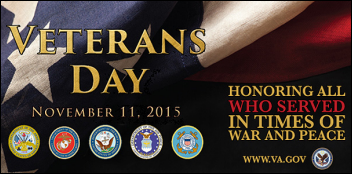
Sponsor Updates
- USA Today features AirStrip President Matt Patterson, MD and innovation partner IBM.
- Anthelio Healthcare Solutions will exhibit at HFMA Region 9 November 15-17 in New Orleans.
- AHA Solutions endorses the YourCareUniverse consumer engagement platform.
- Aventura explains how its Roaming Aware Desktop works in a new video.
- Bernoulli CEO Janet Dillone is featured in OR Today.
- Xconomy profiles Qualcomm Life’s acquisition of CapsuleTech.
- CoverMyMeds will exhibit at the Medicaid Health Plans of America 2015 Conference November 11-13 in Washington, DC.
- Experian Health will host its annual Financial Performance Summit for clients in San Antonio November 16-18.
- Divurgent receives the Inside Business Roaring 20s Award, ranking as one of the area’s top 20 fastest-growing companies.
- EClinicalWorks will exhibit at the 2015 Western States Health-e Connection Summit & Trade Shows November 17 in Scottsdale, AZ.
- Extension Healthcare will exhibit at the National Veterans Small Business Engagement November 17-19 in Pittsburgh.
- Medecision is recognized by Black Book Market Research as a top financial solution for value-based healthcare.
- Healthcare Growth Partners advises iVantage Health Analytics on its sale to The Chartis Group.
- Healthgrades Chief Marketing Officer Emeritus Judy Blackwell receives the John A. Eudes Vision and Excellence Award.
- Healthwise will exhibit at the ACO Congress November 16-18 in Los Angeles.
Blog Posts
- Modified Stage 2 Objectives with Alternates for Stage 1 (AdvancedMD)
- 8 Things You Need to Do in a Secure Software Development Shop (AirWatch)
- Overcoming the trickier parts of Meaningful Use: insights from a Nordic nurse (Nordic)
- The Revenue Cycle After ICD-10 (Culbert Healthcare Solutions)
- Mobile Offers Engagement, Quality and Revenue-Generation Opportunities (PatientSafe Solutions)
- Optimizing Oncology Workflows (Galen Healthcare Solutions)
- Hiring Leads That Quickly Get Distracted with New Opportunities … Squirrel (Hayes Management Consulting)
- 5 Epic Upgrade Cost Considerations (The HCI Group)
Contacts
Mr. H, Lorre, Jennifer, Dr. Jayne, Dr. Gregg, Lt. Dan.
More news: HIStalk Practice, HIStalk Connect.
Get HIStalk updates.
Contact us or send news tips online.

















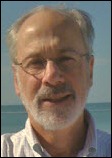





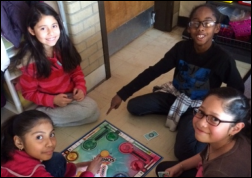






















































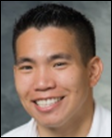

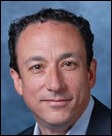























Re: Dr Z. Great story, but whatever happened to professional courtesy???